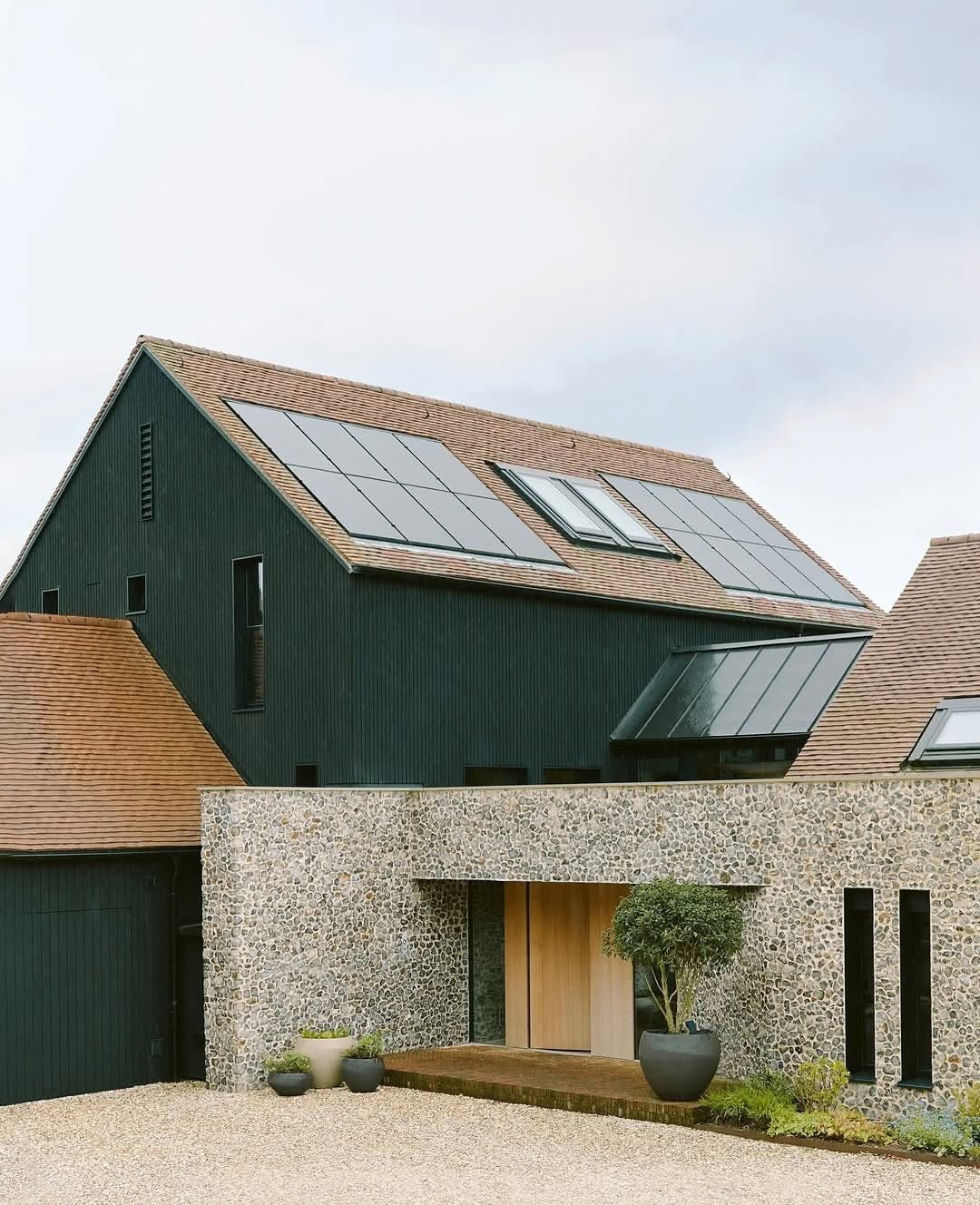About the author
Ben Hardman is the founder of Tiny Eco, a UK-based media site dedicated to green homes and sustainable living. Through expert content and the Green Business Hub, he helps connect eco-conscious consumers with businesses and ideas to have a more positive impact.
Homes account for around 20% of the UK’s carbon emissions. This high energy use not only impacts the environment but also our wallets and health.
The powers at be know this, which is why the upcoming Future Home Standards will aim to cut carbon emissions by 75-80% compared to current standards. Soon enough, energy-efficient, green homes will be the norm in the UK.
And it’s well needed. The UK has some of the oldest and least energy-efficient housing stock in Europe. Did you know the average UK home loses heat three times faster than a German property?
This inefficiency isn’t good – it leads to higher energy bills for you and increased carbon emissions for the country, which then of course have plenty of knock-on effects.
So, whether you’re looking to reduce your future energy bills, live in a healthier home and lower your environmental impact at the same time, here are the five most beneficial features to look out for when buying an energy-efficient home.
1. High-quality build fabric: Insulation, airtightness and glazing
According to Parliament figures, 29 million homes across the UK will need heating system modernisation by 2050. However, there’s little point installing renewable energy sources in a poorly insulated home – it will remain inefficient and uncomfortable.
A well-insulated home with thick coverage behind walls, floors and roof is the cornerstone of energy efficiency.
To get a little technical for a second, look for properties with minimal thermal bridging and good airtightness measures to prevent heat escape. This is a key principle of passive homes, but can also be translated to more energy efficient homes too.
High-performance double or triple glazing with low U-values significantly reduce heat loss through windows. If the developer is really on it, they’ll have considered in which direction the glazing is facing too – south-facing glazing can be optimised for solar gain in the winter with appropriate shading for the summer to improve energy efficiency.
These features translate to:
- Lower heating bills – usually around 25-50% less than badly insulated homes
- More consistent indoor temperatures
- Fewer draughts and cold spots
When viewing a property, ask for the EPC certificate which gives an overall review of the home’s energy efficiency. Homes rated B or above indicate excellent fabric performance and will be significantly cheaper to run.
2. Renewable energy generation and heating systems
Homes equipped with renewable energy generation and efficient heating systems offer homeowners major benefits.
Solar panel systems, also known as solar PV or photovoltaics, that are appropriately sized for the property can generate clean electricity to power your home. If they are already installed on a property, you’ll quite literally be generating free electricity.
The financial advantages for homeowners are compelling. Solar panels on their own can save around 50% on your typical energy bills. Combine your panels with battery storage and you can reduce your annual electricity bills by 70-80%. For a home with pre-installed technology, you’ll save tens of thousands in upfront installation costs too.
Heat pumps are also increasingly important when it comes to reducing carbon emissions. The recent Climate Change Committee’s 7th Carbon Budget expects half of UK homes to be heated by ground source or air source heat pumps by 2040. Currently, we’re sitting around 1%.
A home with a heat pump already correctly installed is a major advantage. It not only saves you thousands on installation, but will deliver you extremely efficient heat. For every unit of energy consumed, a heat pump will deliver 300-400% in heat energy. If you can cover part of the electrical input with your solar panels, you’re on to a winner.
3. Mechanical Ventilation with Heat Recovery (MVHR)
MVHR systems are a must-have in energy-efficient homes. These dedicated systems extract stale air from the home and supply fresh filtered air back in for a much healthier indoor air environment.
The health benefits are significant. MVHR systems can:
- Remove indoor air pollutants
- Control humidity levels (reducing mould problems)
- Filter incoming air to remove allergens and pollution – for those with allergies or respiratory conditions, this can dramatically improve quality of life.
Being a smart system, they also recover up to 95% of the heat from outgoing air before it’s expelled, which is then used to pre-heat the incoming air. From an energy perspective, these systems can reduce heating demands by 10-20% – how good is that?
When viewing properties, ask about the ventilation system and whether MVHR has been professionally commissioned and maintained.
4. Smart energy systems and energy efficient appliances
Smart homes are becoming all the rage. Home Energy Management Systems (HEMS) coordinate multiple aspects of home energy use to maximise efficiency. These intelligent systems can integrate and optimise renewable energy generation, battery storage, heating, lighting and appliance use through a central control system. You’ll have control of this through an app. HEMS link into home use patterns as well as external factors like weather forecasts and energy prices, meaning they can significantly reduce energy waste and costs.
Systems like Wondrwall use AI and automation to take this optimisation further. They learn your patterns and preferences to automatically adjust settings throughout the home. Wondrwall’s technology can anticipate when rooms need heating or cooling, manage solar energy capture and use, as well as adapt to changing conditions without requiring constant user input. We told you they were smart!
You’ll also want to look for homes with A+++ rated appliances throughout. It’s thought these can reduce use by up to 80% when compared to older models.
Another valuable feature to look out for is an EV charger. Whether you have a current EV or not, an electric vehicle charging point future-proofs your home. Electric vehicle usage is growing rapidly and soon every new car sold will be an EV.
Home points can charge up your car for 10 times less than a public charger! Even better, smart-enabled chargers can take advantage of off-peak electricity rates and potentially offer vehicle-to-grid capabilities, turning your car into a mobile power bank for your home.
5. Water efficiency and sustainable materials
Beyond energy considerations, eco-friendly homes should address water use and material sustainability.
Features such as rainwater harvesting systems and grey water recovery systems can reduce mains water consumption by up to 50%. These simple but clever systems collect, treat and reuse wastewater from sources such as showers, sinks, baths and washing machines. The greywater can then be used for non-drinking purposes like flushing toilets or in the garden .Again, good for your bills and better for the environment.
Sustainable, low-embodied carbon building materials are also a great feature. Not only do they reduce the environmental impact of construction but often create healthier indoor environments. Natural materials like wood, lime plaster and clay paints help regulate humidity and contain fewer volatile organic compounds (VOCs) than synthetic alternatives.
By prioritising these five features when house hunting, you’ll not only find a home that’s cheaper to run and more comfortable to live in, but one that’s also kinder to the planet and better for your health. As energy costs continue to rise and climate considerations become more pressing, these homes will increasingly represent the best long-term investment for both personal and environmental wellbeing.










